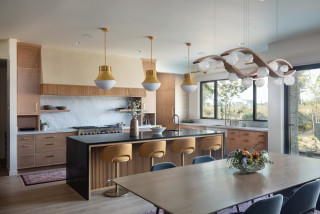
This article was originally published by a www.houzz.com . Read the Original article here. .

This article was originally published by a www.houzz.com . Read the Original article here. .

Be prepared to let go of hands-on tasks. “For me, the hardest part [of moving into management] was stepping away from designing floor plans,” he says. “I loved doing them. But by offloading that task, I freed myself to focus on what the firm needed, which was strategic leadership and growth.”
Invest in solid processes while staying nimble. “It’s crucial to build and refine systems and processes for consistency of quality as your business grows,” Sakai says. “But they must be flexible to adapt to industry trends and new challenges. We’ve spent a lot of time developing quality-control processes and checklists. But we evolve them constantly to stay relevant — otherwise, you risk become outdated.”
Get comfortable being uncomfortable. “If you’re comfortable, you’re not growing,” Sakai says. “Growth comes with discomfort. It’s important to allow yourself and your team to step back sometimes, but also to push forward when the time is right.”
Be transparent. “We’re transparent with everything — our financials, goals and client fees,” he says. “Transparency builds trust internally and with clients, fostering a culture of collaboration.”
Think long-term. “When you’re managing a project, you’re thinking about the next hour, the next day,” Sakai says. “As CEO, I’ve learned to think in 10-year chunks and frame day-to-day problems within the broader context of the firm’s reputation and goals.”
Empower others. “Always train your replacement,” Sakai says. “When someone can replace you in your current role, you can evolve into something new. Growth isn’t about holding back — it’s about building others up.”
34 Home Design Trends That Will Define 2025
This article was originally published by a www.houzz.com . Read the Original article here. .
When you have too many plates spinning at the same time, they can all come crashing down around you, so try to focus on one task at a time. An effective strategy, according to James, is to block out time slots for each different activity.
“For instance, set aside blocks of time for client meetings, design concept development, sourcing materials, and administrative tasks,” he says. “Stick to your schedule as closely as possible to ensure you have dedicated time for all aspects of your work.”
“I also prefer blocking out a few hours each week for design work and try to switch off my phone or email in order to focus on the project in hand,” interior designer Chantel Elshout says.